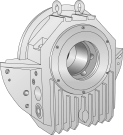Design Features
Temperature rise:
For continuous duty applications, generators are typically 80° C, 105° C or 125° C rise by resistance per NEMA MG-1. Standby ratings are either 105° C, 130° C or 150° C rise per NEMA MG-1. Rise is based on an ambient temperature of 40° C.
Overload:
Typical allowable overloads are 50% for 5 minutes and 10% for 2 hours during 6 hours of operation. Short-circuit capability is at least 15 seconds at 300%.
Waveform:
Generators are specifically designed to minimize harmonic distortion. Typical waveform characteristics are as follows:
- Deviation factor: less than 5%
- Crest factor: 1.3 - 1.5.
- Harmonic content: any single harmonic is less than 3% and the total harmonic is less than 4%
- Telephone influence factor (TIF): meets or exceeds NEMA MG-1- 22.43 standards
- Telephone harmonic factor (THF): meets or exceeds IEC 60034-1 requirements
Power factor:
0.8 standard (other PFs available upon request)
Phase: 3
Voltage regulation:
The voltage regulation can be from plus or minus 1/4% to plus or minus 2% depending on regulator choice. Kato manufactures a complete line of voltage regulators and accessories in accord with varying application requirements.
Voltage balance:
With balanced loads, the voltage is held within 1.0% between phases.
Field excitation: Fast voltage response time to generator load changes with short time constant is provided with the Kato brushless excitation systems. This allows the voltage regulator to react to changes in field excitation requirements. Three-phase high-frequency revolving armature excitation current is full-wave rectified through six silicon-type rectifiers mounted in heat sinks and positioned in the air stream for maximum heat dissipation. Diode PIV rating is at least twice the peak operating voltage normally required.
Permanent magnet supplemental generator:
A separate permanent magnet rotating generator (PMG) can be supplied, in addition to the brushless exciter, as an option.
A Kato Engineering PMG has the following advantages:
Provides an economical and simple means of reliable, responsive and stable input power to the voltage regulator
- Supplies continuous power to the exciter through the voltage regulator to maintain up to 300% short-circuit current from the alternator during a fault condition
- Provides full exciter power, regardless of alternator voltage, for motor starting and is a separate voltage source for use external to the generator set, such as a tachometer and relay options
- Reduces the effects of both conducted and radiated electromagnetic interference (EMI). With an EMI filter, the PMG and a Kato voltage regulator will meet the emissions requirements of Mil-Std. 461C, Part 9, Class C2
- Enhances manual voltage control regulation as the PMG provides a more stable power source to the manual control
Bearings: Bearings for machines up to 2000 kW are re- greaseable radial ball bearings. For 2000 kW and over, grease lubricated split roller bearings and pressure or ring-oil lubricated sleeve bearings are available for all sizes. Spherical roller bearings or cylindrical roller bearings are used when there are special thrust, shock or radial load requirements.
 |
Ball bearing: The most popular and universally used bearing. Equipped with grease fittings, it is suitable for low, medium or high speeds and single or two-bearing generators. The ball bearing is lowest in cost. |
 |
Cylindrical roller bearing: Excellent for heavy radial loads and radial shock, such as railway generators. The cylindrical bearing is also suitable for low and medium speeds. It is used on two-bearing machines only. |
 |
Spherical roller bearing: Capable of withstanding heavy thrust and radial loads, it has the additional feature of being self aligning. It is suitable for single and two-bearing machines. |
 |
Split roller bearing: Used on large generators of low and medium speed up to 1800 RPM. It is self aligning and can be replaced without moving the generators endbracket or shaft, a feature desirable when the generator is driven by an engine on each end. Because it is self aligning, this bearing is suitable for single or two-bearing machines. |
 |
Sleeve bearing: Has a long life and the ability to run at higher speeds and loads. It is also capable of high radial shock. Because it is split, it can be easily removed without disturbing the shaft and endbracket. It is self aligning and can be used on single or two-bearing generators. It may be self lubricated or pressure lubricated depending upon the application. |
Prime mover connections:
Units with single-bearing designs may have either SAE flexible disk type couplings or forged flanged shafts for direct connection to engine flywheels. Generators with two-bearing designs have shaft extensions that are suitable for direct coupling to prime movers. Close-coupled SAE housing adapters are also available with both single and two-bearing designs.
Controls:
When requested, KATO™ voltage regulators and other controls will be supplied to provide complete system compatibility.
Parallel operation:
All Kato Engineering designed generators can operate in parallel with any generator when proper system coordination is made. We will assist the customer by providing all generator parameters needed for a system study. We offer consultation for the design of the generator requirements.

